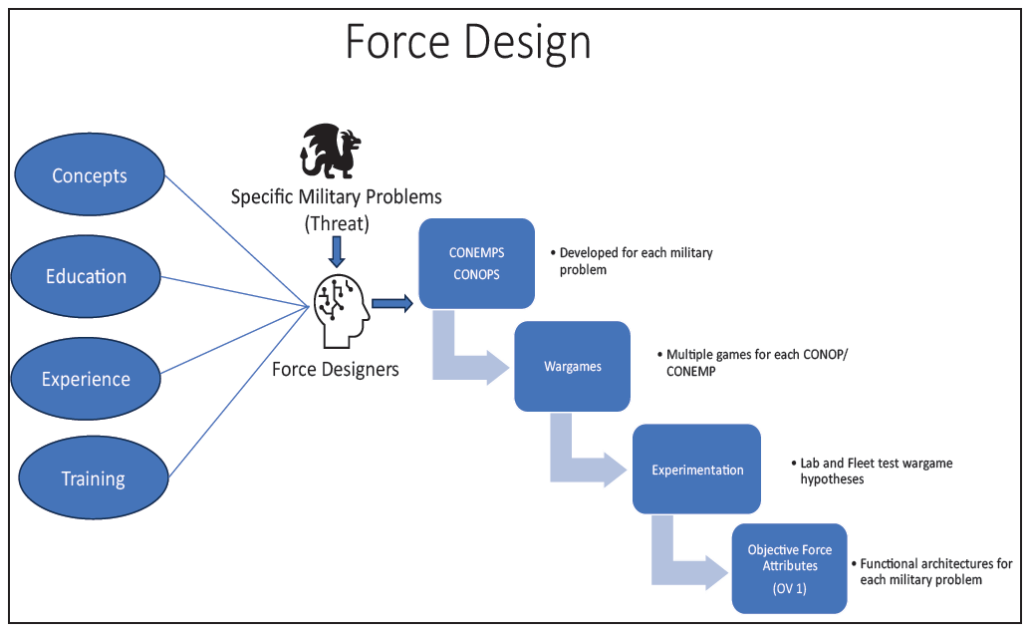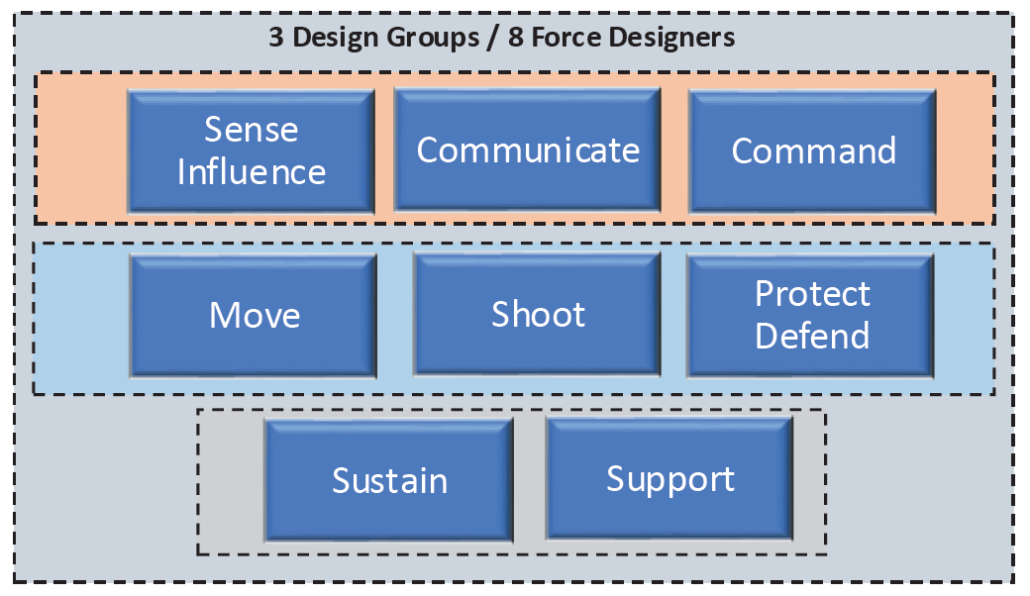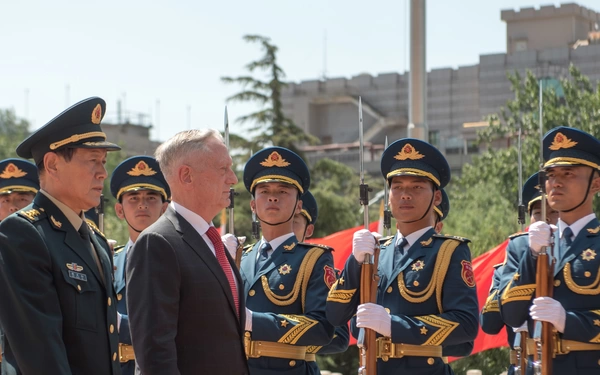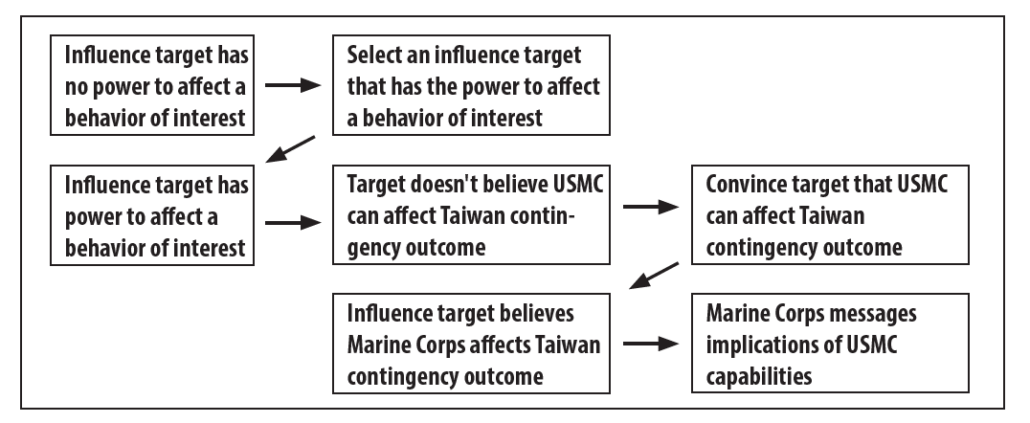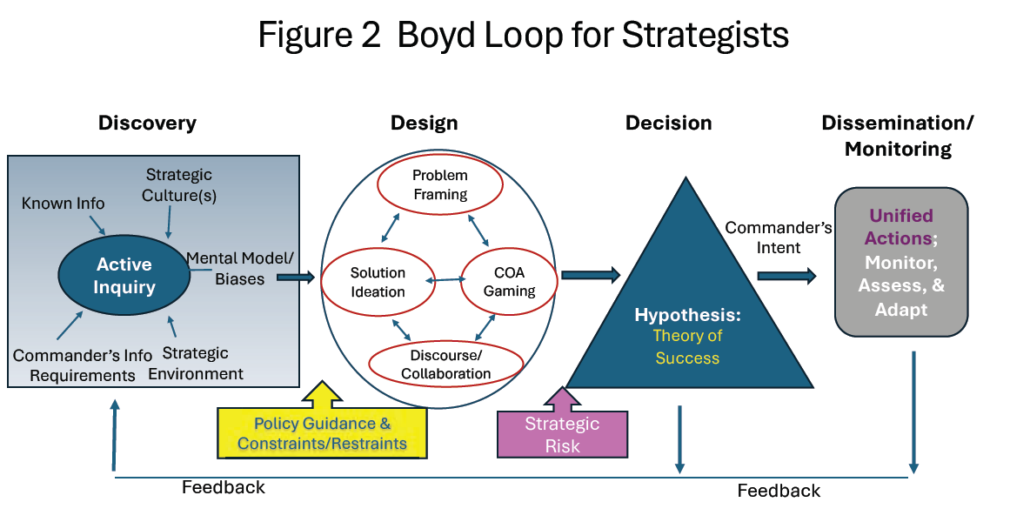Legislative action to speed innovation
Under constraints in current programming and budgeting processes, the Marine Corps cannot match adversaries’ speed of innovation in today’s rapidly changing, technologically advancing environment. Many complain that the biggest problem with the Corps’ budget is it is too small. A bigger problem is that legislative requirements prevent us from properly allocating funding to new, emerging technology that advances capabilities. The Planning, Programming, Budgeting, and Execution (PPBE) Process is how the Marine Corps plans for, requests, allocates, and spends the funding received from Congress. The Marine Corps must seek legislative reform in the programming and budgeting process to facilitate more timely acquisition of emerging technologies to remain competitive with adversaries. Many service members and civilians in the DOD recognize problems in this process. After a recent commission on PPBE reform, some in Congress now recognize the problem, too. It is a long, drawn-out process full of inefficiencies and restraints that create waste. Our Nation’s adversaries do not face these same bureaucratic hurdles in resource allocation and subsequent acquisition of goods. They have governments that try to facilitate the building of more lethal forces with modern technology. Because they have governments who try to streamline these processes instead of inadvertently hampering them, their military forces will be technologically superior to ours if we do not move to effect change now.
There are steps the Marine Corps can take with Congress to enact changes that facilitate innovation and allow the Corps to allocate resources more appropriately. Change like this requires transparency with Congress and continued good stewardship of taxpayer dollars, but the payoff will provide flexibility in resource allocation and a dramatic reduction in wasted funding.
The Marine Corps and DOD allocate resources against requirements through the PPBE process. The Marine Corps uses the Planning, Programming, Budgeting, Execution, and Assessment (PPBEA) Process. Because this article draws heavily from DOD policy and discussions at the congressional level, it will refer to the process as the PPBE Process.
The full PPBE Process is typically a three-year cycle that begins with the Deputy Commandant for Combat Development and Integration (DC CD&I) conducting strategic and capabilities planning based on authoritative strategies at the national, departmental, and Service levels as well as the Commandant’s guidance. This is followed by the programming and budgeting phases, where funds are more specifically tied to requirements that support necessary capabilities. The process, for this article, ends in the execution phase when we spend congressionally appropriated funds against the requirements we began planning for years ago.1
The current process allows for civilian oversight of DOD spending through congressional control over the defense budget. It has permitted Congress to look at DOD needs as a whole and align resources to best support national security. At least, it has best supported national security in this manner up until the technological revolution we’re experiencing. A significant problem in this process is that to conform to this process the Marine Corps must begin identifying requirements three years before the year of execution. By the time the year of execution arrives, the technology looks completely different than it did during the planning process, and we have insufficient flexibility in realigning funds toward emergent requirements that did not exist during the planning phase. Thankfully, many of the shortfalls in the current process have already been identified.
The National Defense Authorization Act of Fiscal Year 2022 called for the creation of a commission to evaluate the PPBE Process. The commission identified many issues with the current process that prevent it from supporting the DOD and national security in the current, ever-changing environment. Some of the issues identified are that it takes too long to distribute funds, it is challenging to make modifications or upgrades to current assets, the process makes Services slow to react to new threats, new starts are prohibited under a continuing resolution (CR), and the speed of innovation is slowed.2 During the planning portion of PPBE, DC CD&I aligns strategies and guidance to capabilities that will support this guidance.3 However, “the budgets presented to Congress and what is appropriated cannot be tied easily to the overall defense strategy since the budgets are presented to Congress in terms of appropriation title and agency … rather than by capability areas.”4 There is a misalignment between how the Marine Corps plans and how Congress resources those plans. This misalignment, and many other issues identified in the commission’s final report, cannot be remedied without widespread legislative and procedural change. However, there are more minor modifications to the current process that the Corps can work with Congress to change while we wait for more far-reaching action. Before looking at these less sweeping changes, it is worthwhile to look at how our adversaries approach resourcing their military forces to get the full picture of the problems we face.
Our adversaries do not face the same bureaucratic hurdles as our own. The Chinese Communist Party (CCP) intentionally creates competition for the benefit of the People’s Liberation Army and increases its bargaining power with corporations in the defense industry.5 The CCP has split and merged defense industry corporations several times in the past to better foster innovation in technology and try to overcome its very different set of hurdles regarding military procurement.6 Based on U.S. values, the CCP’s example does not provide a model worth emulating. China’s government does not have the checks and balances in place that the United States does to prevent this kind of abuse of power.
It is also worth mentioning that the system the CCP is implementing has not yet been effective in producing the desired results. None of the widespread reforms the CCP implemented have yet to get to the root of the procurement problems faced by their military, and the more current military-civil fusion it is implementing is focused more on research and development and less on procurement.7 For that reason, this brief comparison is not intended to be alarmist in nature. It is intended to show the sharp contrast to that of the U.S. Government, whose multi-year budgeting process and strict restrictions on funds availability drastically slow down military innovation.
On 20 March 2024, the Commission on PPBE Reform presented its findings and recommendations to the U.S. Senate Committee on Armed Service. While some committee members viewed the findings favorably and realized the need for reformation in the PPBE process, there was also strong pushback and harsh criticism. The DOD was criticized for overspending, failing to track where its money went, and never having passed an audit. However, it was noted in the hearing that the Marine Corps is the only branch of the DOD to receive an unmodified audit opinion.8 Due to the size of the DOD’s budget and other governmental departments that also feel like they desperately need additional funding, it is no surprise that the DOD’s inability to account for taxpayer dollars is preventing Congress from giving its military more flexibility to seek innovative solutions to modern problems in preparation for a peer-to-peer conflict.
Based on the feedback received from the Senate Armed Services Committee, the Marine Corps should seek legislative change allowing branches within the DOD that have passed the audit to receive benefit from some of the recommendations in the committee’s final report. This allowance requires transparency and open communication between the Marine Corps and Congress. The Marine Corps’ clean audit opinion goes a long way toward displaying transparency and building trust with Congress. We have proven that we can account for taxpayer dollars while adhering to applicable laws and regulations.
The committee’s final report contained 28 recommendations to Congress, many of which would streamline acquisition, reduce waste, and permit innovation. Many of these recommendations need to be implemented in the entire DOD or they are simply not feasible. These changes will likely take years to come to fruition, assuming they do at all. The Marine Corps may already find itself engaged in the next conflict by this time and will have missed out on years’ worth of opportunities waiting for Congress to effect change to the PPBE Process. However, some recommendations could realistically be applied to only portions of the DOD and could be contingent upon a clean audit opinion. Congress can grant branches that receive an unmodified audit opinion greater flexibility in managing financial resources provided they can maintain their unmodified opinion.
The Marine Corps receives funding through appropriations, which provides funds for a specified time based on the length of appropriation. Military Personnel (MILPERS) and Operations and Maintenance (O&M) funds are single-year appropriations, which means they must be completely used by the end of the current fiscal year and are no longer available for use after 30 September of each fiscal year. Many Marines are likely familiar with the end-of-year funds dump, in which all the funding that was set aside at various levels for emergent requirements or additional budget cuts during the year of execution is hastily spent on whatever requirements can still be executed at the end of the year, regardless of the priority or capability provided. While it is necessary to ensure funds are available for emergent requirements, it goes without saying that this is an inefficient use of funding and a waste of taxpayer dollars. The commission recommended that the DOD should be allowed to carry over five percent of its Military Personnel and O&M funding each year. This would enable branches to maintain a reserve for unexpected end-of-year bills, short-notice permanent change of station orders, and overseas medical evacuation needs without potentially wasting that money at the end of each fiscal year.9 Instead, those funds could be carried over and applied to needs that more directly contributed to supporting warfighters and enhancing capabilities. This is the first recommendation from the commission that Marine Corps leadership should ask for Congress to implement immediately based on a clean audit opinion. Because the Corps has proven it is a good steward of taxpayer dollars, let us further stretch those dollars by carrying over five percent of these single-year appropriations.
Below-threshold reprogramming (BTR) allows the Marine Corps “to realign, within prescribed limits, congressionally approved funding” without congressional approval.10 The BTRs are important since the year of execution in the PPBE cycle happens years after planning for that year began. Undoubtedly, unexpected requirements will arise that were not resourced by Congress. The committee’s final report made several recommendations regarding BTRs, one of which is to increase BTR thresholds.11 This is a relatively minor adjustment for Congress to implement, but when coupled with other recommendations in the committee’s final report, it will probably take years to implement. The Marine Corps should ask Congress to immediately permit BTRs up to the threshold recommended in the commission’s report.
Continuing resolutions have become a painful and standard part of every fiscal year. Annual appropriations bills, which provide our funding for the new fiscal year, are supposed to be signed into law by 1 October of that year. The CRs were created as a safeguard to provide temporary funding until the new year’s budget can be signed, but they have turned into an expected norm for every year. Unfortunately, expecting them does not do anything to mitigate the consequences of them. “Standard CR prohibitions on new starts and increased production quantities delay the start of innovative new programs and the acquisition of essential capabilities.”12 Based on some of the comments in the hearing on the commission’s final report, it is unlikely Congress will be quick to remove all the restrictions in CRs, but some allowances can be made. Congress should allow new starts and increased production quantities during a CR for military branches that have and maintain an unmodified audit opinion.
These changes would not only help the Marine Corps foster innovation but also allow us the flexibility to more properly align taxpayer dollars to higher priority requirements. They would also incentivize a clean audit opinion in other branches of the military and the DOD, which benefits Congress and all taxpayers. These changes will not solve all the Marine Corps’ problems in the PPBE Process as it relates to acquisition and proper resource allocation, but they will help. They are also realistic. Congress has acknowledged these problems exist. Because the Marine Corps has set itself apart from the rest of the DOD by proving it can pass an audit, it should seek Congressional relief from these known, documented problems.
The current PPBE process is too slow-moving to support the war‑
fighter in today’s rapidly evolving environment. Current policy is allowing technological advances to outpace the DOD while our adversaries are actively trying to capitalize on these advances. The DOD has not received a clean audit opinion and that is hurting us. This is understandable because the DOD, as the largest piece of the government’s budget pie, owes it to the people we serve to be good stewards of their dollars. The Marine Corps must lily pad off our unmodified audit opinion and work with Congress to seek relief from bureaucratic constraints in the PPBE process, or we will be outpaced by technology and our adversaries.
>The author’s bio was not available at the time of publication.
Notes
1. Commandant of the Marine Corps, MCO 7000.1, Marine Corps Planning, Programming, Budgeting, Execution, and Assessment Process, (Washington, DC: August 2022).
2. Commission on Planning, Programming, Budgeting, and Execution Reform, Defense Resourcing for the Future (Arlington, VA: 2024).
3. Marine Corps PPBEA Process.
4. Defense Resourcing for the Future.
5. Yoram Evron, “China’s Military-Civil Fusion and Military Procurement,” Asia Policy 16, No. 1 (2022).
6. Ibid.
7. Ibid.
8. Hearing to Receive Testimony on the Final Report of the Planning, Programming, Budgeting, and Execution Reform Commission: Hearing before the Senate Committee on Armed Services, 111th Congress, (2009), https://www.armed-services.senate.gov/hearings/to-receive-testimony-on-the-final-report-of-the-planning-programming-budgeting-and-execution-reform-commission.
9. Defense Resourcing for the Future.
10. Department of Defense, Financial Management Regulation, Volume 3: Budget Execution–Availability and Use of Budgetary Resources, Chapter 6: Reprogramming of DoD Appropriated Funds (Washington, DC: 2000).
11. Defense Resourcing for the Future.
12. Ibid.





